5 conclusions from La Flèche Wallonne Feminine 2021
The secret to success on Mur de Huy, a climb that is no friend to Van Vleuten and rider safety in question
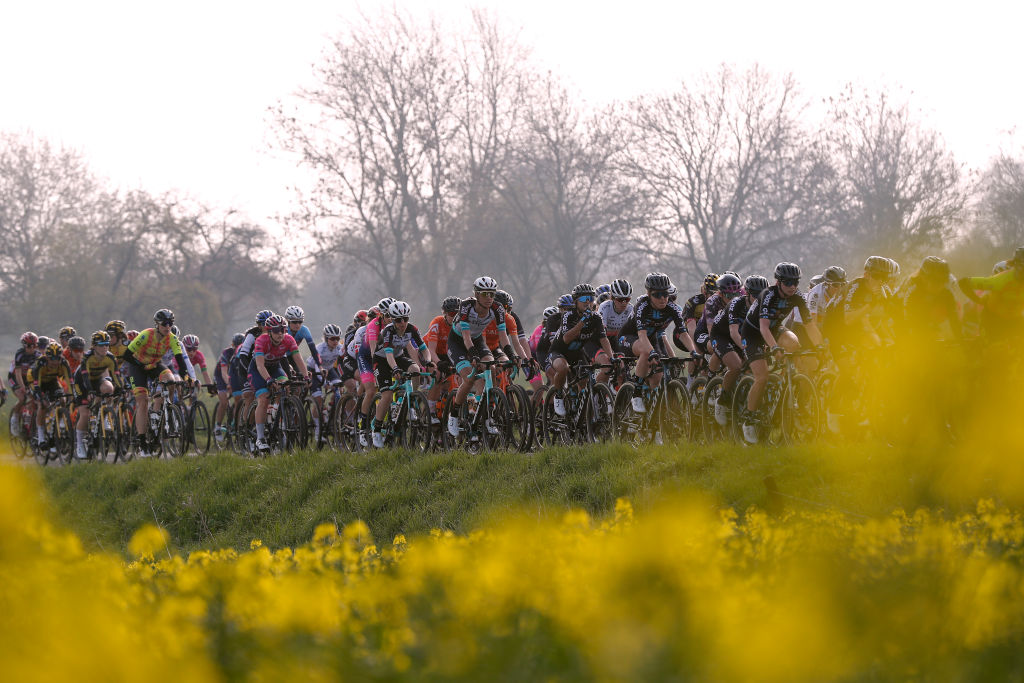
La Flèche Wallonne Feminine ended with Anna van der Breggen (SD Worx) securing a seventh consecutive title in Belgium.
The mid-week instalment of the Ardennes Classics, held after Amstel Gold Race Ladies Edition and ahead of Liège-Bastogne-Liège, proved to be one of the most aggressive editions but the race still came down to the steep slopes of the Mur de Huy.
Cyclingnews takes a look at the five biggest takeaways from the 2021 La Flèche Wallonne Feminine.
Patience is the secret of the Mur de Huy
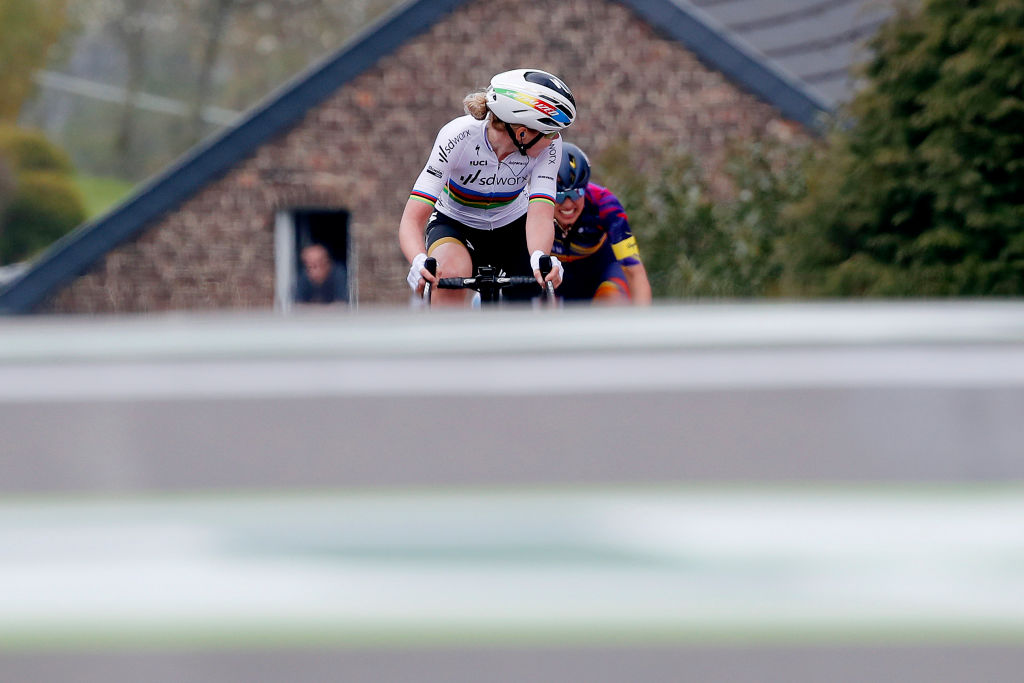
On the eve of La Flèche Wallonne Feminine, Anna van der Breggen (SD Worx) said: "The Mur de Huy never lies." The next day, the double world champion stormed to her seventh consecutive victory and in doing so, once again, proved to be the strongest on the iconic ascent’s steep pitches.
The Mur de Huy is a steep 1.3 kilometre ascent that starts with a run-in along the Avenue du Condroz before reaching the first right-hand turn off the main road at a 10 per cent grade. The climb steepens to 12 per cent, then 14 per cent, and after a hard left it hits the steepest section at 19 per cent with 400 metres to go. The grade eases off slightly to 13 per cent, then 12 per cent, and then 9 per cent in the final 100 metres to the finish line.
Van der Breggen insists that there are no secrets to winning on the Mur de Huy; no secret lines to take, no best places to attack, no real strategy involved. In fact, she revealed that it's not even about pure strength but she did give one tip for success on the Mur de Huy - "go at your own pace."
"You should know what’s best for yourself. You should know how high you can go in your pace, not to blow up, but still have enough to sprint or drop the others. The Mur de Huy asks for self knowledge," Van der Breggen said.
Get The Leadout Newsletter
The latest race content, interviews, features, reviews and expert buying guides, direct to your inbox!
Van der Breggen seems to have dialed in the ability to teeter on the edge going all-out and not blowing up.
It seems that there is also an element of patience involved in her seven victories. Her physical strength on such a climb is undeniable but she also tolerates delay and has mastered the ability to hold back just enough to ensure victory.
Van Vleuten and the Mur de Huy are 'not friends'
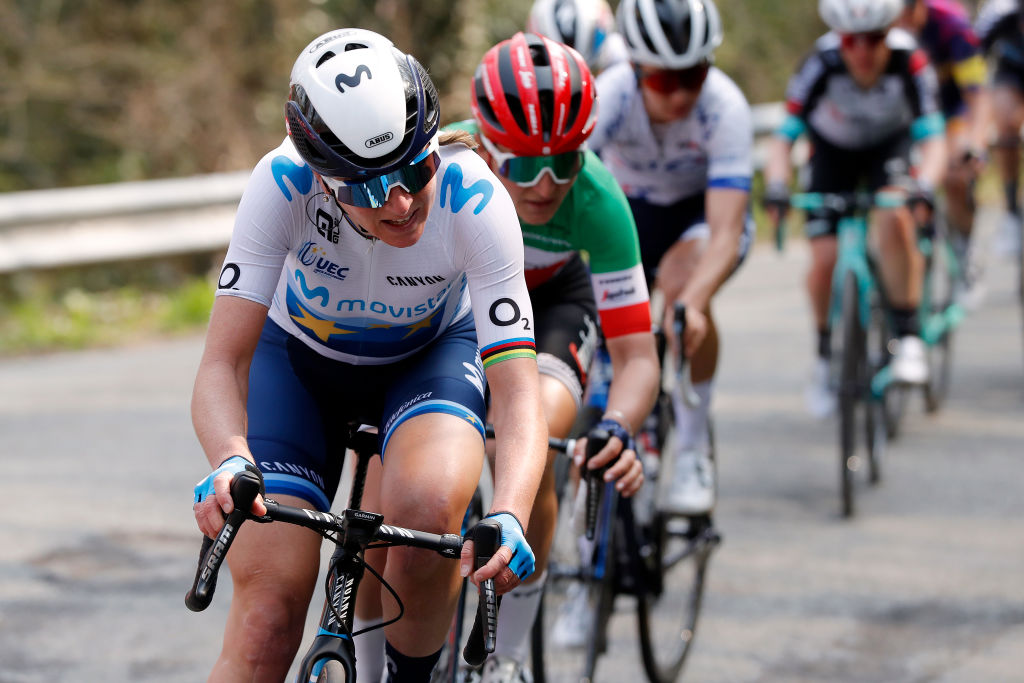
Annemiek van Vleuten has stated that of the three Ardennes Classics – Amstel Gold Race, Flèche Wallonne and Liège-Bastogne-Liège – the mid-week Flèche Wallonne is her least favourite. Further to that revelation, Van Vleuten has stated that she and the Mur de Huy are "not friends".
“I think this is always the biggest challenge of the three," Van Vleuten said of the Ardennes Classics
“As said before, I think Liège suits me best. The Flèche Wallonne is the furthest from my favourite race of the three. But we drove a good course with the team. I was also comfortable in it myself and I felt better than with the Amstel Gold Race."
Van Vleuten has stood on the podium three times at Amstel Gold Race, twice on the podium at Flèche Wallonne and she won Liège-Bastogne-Liège in 2019. Flèche Wallonne may not be her favourite but she played an aggressive hand with several strong attacks that whittled the main field down to a select group on the local Huy circuit.
Van der Breggen proved strongest on the Mur de Huy, winning ahead of Kasia Niewiadoma (Canyon-SRAM), while Elisa Longo Borghini (Trek-Segafredo) pipped Van Vleuten at the line for third place.
"The only thing I am disappointed about today is that Elisa Longo Borghini passed me just before the finish. That was just stupid. When I looked back at 75 metres from the line, I had left her behind. It was very big and I didn't feel her coming again, but I should have looked again. Other than that, it was the maximum suffering on the Wall," Van Vleuten said. "Anna simply showed clearly that this is the course that really suits her. I am still not completely friends with that Mur de Huy."
No podium surprises
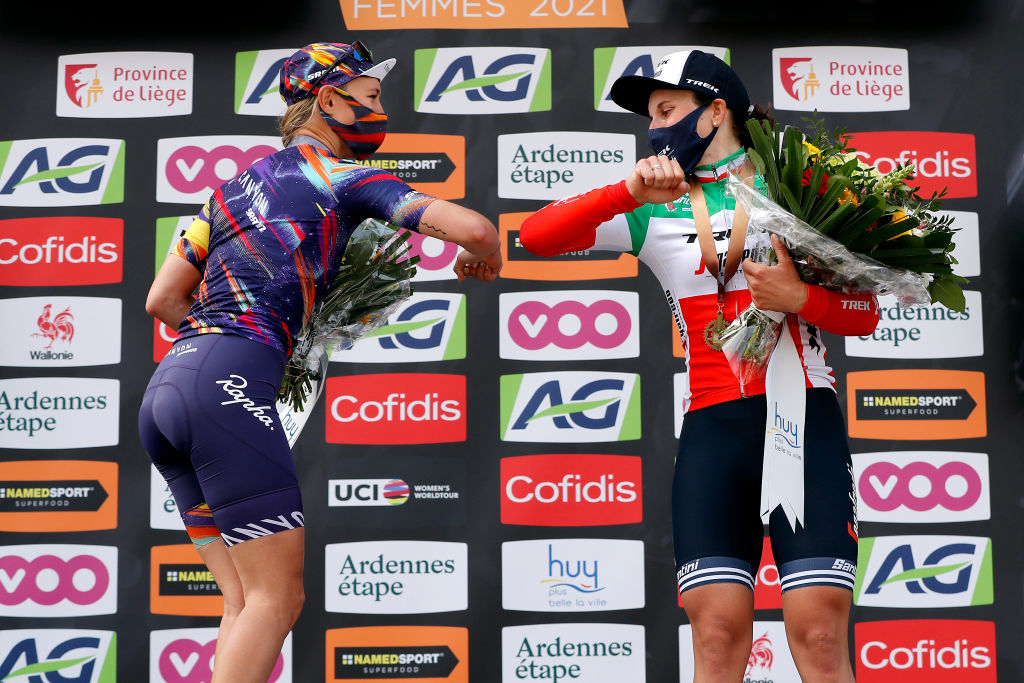
A photo of the top three riders on the podium shows Anna van der Breggen (SD Worx) on the winner's step between runner-up Kasia Niewiadoma (Canyon-SRAM) and third placed Elisa Longo Borghini (Trek-Segafredo), the three riders who were most expected to be the strongest at this year’s Flèche Wallonne.
Van der Breggen, although slightly unsure of her form due to a recent illness, proved to have the winning strength to seal a seventh victory in a row. Niewiadoma and Longo Borghini have consistently gone head-to-head over the punchy terrain of the Spring Classics, leading straight to Flèche Wallonne.
"In previous years, I've always been sprinting to try to get to the bottom of the Mur and be right in the front. I felt strong and I knew that no one could really drop me right at the start of the Mur. So, I kept more relaxed and as the climb went on I came next to Anna and I tried to keep calm," said Niewiadoma.
"I have no regrets. I'm satisfied with my race and I'm very happy to be on the podium."
Niewiadoma and Longo Borghini have shown their pure power on short steep climbs all season, so the fact that Flèche Wallonne finished at the top of the Mur du Huy played perfectly to their strengths.
For Longo Borghini, Trek-Segafredo's team tactics – with Lucinda Brand being in the early breakaway and Ruth Winder in a late-race solo move – helped her save her energy for those final moments.
“I expected a very hard race and I think we made a very nice race to watch, too. Third is the best I could do so I have no regrets. It’s a very good result and this is one of my favourite races. It’s actually my dream race, but I have a love/hate relationship with it but I hope one day I can win it," said Longo Borghini.
Breakaways
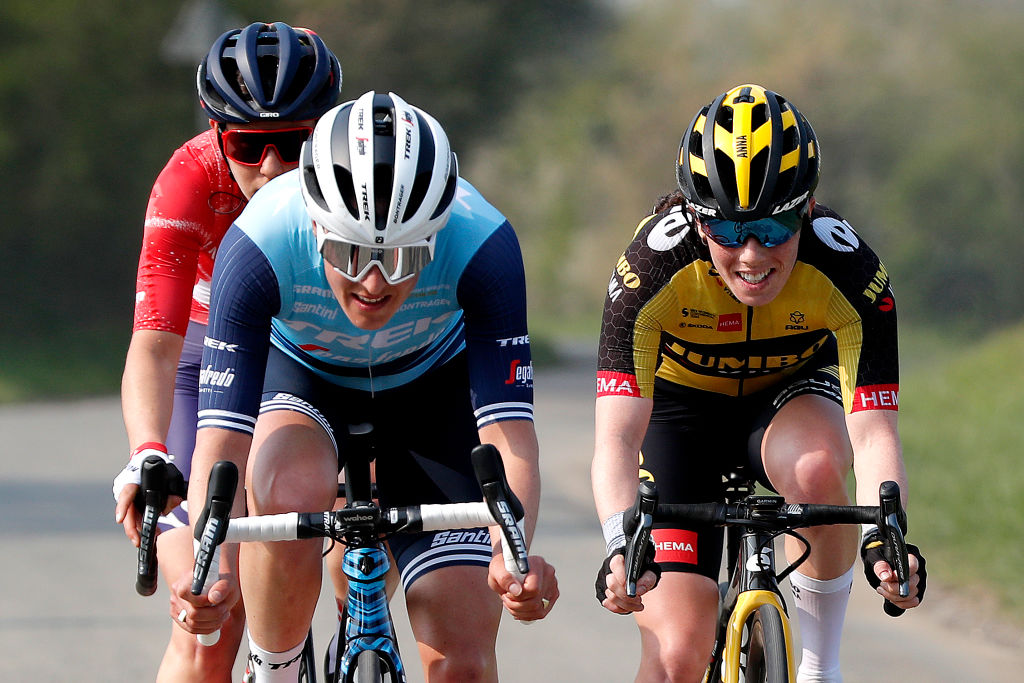
There are two things that we can normally count on at Flèche Wallonne: the breakaway being caught and fireworks at the top of the Mur de Huy.
There have been a couple of occasions where late-race attacks have succeeded over the years. For example, a late-race attack by Hanka Kupfernagel and Sonia Huguet with six kilometres to go, saw Huguet win the 2004 edition by nine seconds over Kupfernagel and 18 seconds over the chase group. In 2013, the reduced field split in three before the bottom of the Mur de Huy, which saw Vos come to the line ahead of Longo Borghini and Ashleigh Moolman-Pasio, while Van der Breggen brought in the chase group for fourth place six seconds back.
This year's edition of the mid-week Ardennes Classics presented a challenging route and plenty of opportunity for a breakaway to form, and it did, with three key riders in Anna Henderson (Jumbo-Visma), Lucinda Brand (Trek-Segafredo) and Elise Chabbey (Canyon-SRAM).
They extended their lead to 1:20 but were caught along the local circuit just after the Côte d’Ereffe. Their efforts were not in vain and helped set up their teammates for success.
Ruth Winder (Trek-Segafredo) was the next to launch a late-race solo attack but she was caught at the base of the climb and finished seventh, while her teammate Longo Borghini was third.
"Elise had a great race in the main breakaway, and then when she was caught she really kept fighting and attacking, and trying to make a difference. Seeing that, gave me confidence for the final and that we're all in it together. When you get support like that then you're willing to give even more," said Chabbey's Canyon-SRAM teammate Niewiadoma, who finished second.
ASO rider safety in question
I guess this does not go for everyone. How will we ever be better as a sport if the biggest organizer handles safety this way? https://t.co/8gg6RIRAhN pic.twitter.com/haXqYYGDgwApril 21, 2021
Flanders Classics CEO Tomas Van Den Spiegel has criticised Amaury Sport Organisation (ASO) citing poor safety standards at Flèche Wallonne men's and women's races.
Video footage from the men's and women's circuit in Huy appear to show a row of street bollards, one with an orange cone on top, along the side of the road.
There are also bright yellow signals placed further out on the road to notify riders of the several other in-road street bollards and a volunteer marshal wearing a red vest standing in the middle of the roadway directing the approaching peloton to go around him and the street bollards with roughly 14 kilometres to go.
"Personally rider safety and the responsibility that goes with it as an organizer is my biggest stress. I cross my fingers again for Sunday and hope for great races with no serious crashes," Van Den Spiegel wrote in a post on Twitter thread that started on April 2 ahead of the Tour of Flanders, which highlighted his organisation's safety plan that included crash protection in collaboration with partner Bopan.
He added to that thread during Flèche Wallonne on Wednesday.
"I guess this does not go for everyone. How will we ever be better as a sport if the biggest organizer handles safety this way?"

Kirsten Frattini is the Deputy Editor of Cyclingnews, overseeing the global racing content plan.
Kirsten has a background in Kinesiology and Health Science. She has been involved in cycling from the community and grassroots level to professional cycling's biggest races, reporting on the WorldTour, Spring Classics, Tours de France, World Championships and Olympic Games.
She began her sports journalism career with Cyclingnews as a North American Correspondent in 2006. In 2018, Kirsten became Women's Editor – overseeing the content strategy, race coverage and growth of women's professional cycling – before becoming Deputy Editor in 2023.